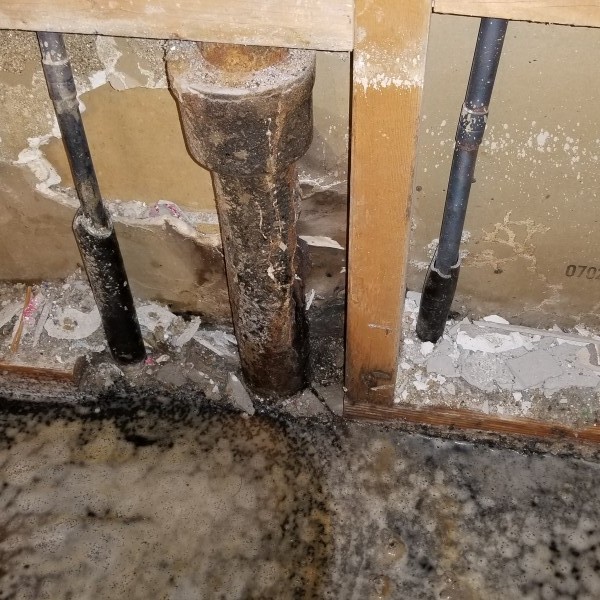Just How to Avoid Bathroom Water Damage
Just How to Avoid Bathroom Water Damage
Blog Article
We have noticed this post on How to Repair and Prevent Bathroom Water Damage down the page on the net and accepted it made perfect sense to discuss it with you over here.

The washroom is extremely susceptible for wet accumulation and prospective water damages due to the regular use of water in it. This post uses straightforward assessment strategies to aid detecting water damage risks.
The regular use of water in the shower room makes it very prone for wet buildup and prospective water damages. By evaluating it consistently, you can reduce water related damages.
The complying with set of assessments is simple to do and also must be done when in every three months in order to maintain your shower room in good shape as well as to avoid potential water damages caused by the bathtub, the shower, pipeline joints and plumbing, sinks, cabinets, as well as the commode
Do not disregard carrying out these inspections and be thorough while executing them. Remember that these straightforward inspections can conserve you a lot of cash by supplying very early indicators for water damage
Bathtub and also Shower
The shower and also bathtub require special focus and maintenance. Examine the tiles and replace if fractured. See to it that there is no missing out on grout in between the ceramic tiles. Inspect and also change split caulking at joints where the walls fulfill the floor or the bathtub. Obstructed drains and also pipelines issues will protect against the bathtub from drying out as well as may show severe issues beneath the bath tub. Talk to an expert immediately to stop architectural damage. Take note of discolorations or soft locations around the bathtub wall surfaces as they might suggest an inner leakage.
Plumbing
Signs for water damage are hard to identify considering that many pipelines are set up inside the wall surfaces.
Pay special focus to flooring and also walls dampness as well as discolorations as they may suggest an unseen plumbing issue. Examine wetness degrees in adjoining spaces too.
Sinks as well as Cabinets
Sinks as well as cabinets are subjected to wetness and humidity day-to-day and also are typically forgotten. Inspect on a regular basis under the sink and on the counter top over it. Repair any type of drip in the catch as it may recommend drainpipe problems. Take a look around the sink, slow-moving draining pipes may indicate an obstructed drainpipe. Replace sink seals if they are split or loosened.
The Commode
The toilet is a prone water junction. Inspect the water lines and also look for leaks around the toilet seat, in the hose pipe, as well as under the water container. If you detect any signs of wetness on the flooring around the commode, check for leaks in the toilet rim and also container seals.
Be aware that hanging toilet bowl deodorants enhances the opportunities for obstructions.
TIPS TO PREVENT WATER DAMAGE IN THE BATHROOM
The average household uses approximately 80-100 gallons of water per person per day. For a family of 4, that's almost 2,500 gallons of water a week! The largest portion of this consumption comes from bathroom use. Flushing the toilet uses the most water, followed by taking a shower or bath. With that much water running through the home, water damage in the bathroom is bound to happen. Knowing how to spot signs of a water leak is essential to preventing long-term damage. This guide provides you with tips to reduce the impact of water damage on your bathroom.
CAUSES OF BATHROOM WATER DAMAGE
Pipe breaks are the most common cause of water damage we see in our daily jobs. The age of a pipe plays a large role in a pipe break as well as corrosion. Over time, the metal begins to break down, allowing water to escape. Frozen pipe breaks are also a concern in the winter months. Toilet overflows caused by paper products or children flushing inappropriate items. Degraded caulking around the toilet or bathtub can allow water seepage, sometimes behind the fixture, into the subfloor or walls. Condensation forms when the water in a pipe is cooler than the air temperature. Beads of water form on the exterior of the pipes, sometimes so much so that the water begins to drip and pool below. Sink or shower backups created by poor drainage. HOW TO PREVENT WATER DAMAGE IN YOUR BATHROOM
Inspect your toilet supply line for worn or frayed hoses and replace them as needed. Winterize your plumbing to prevent a frozen pipe break. Use vent fans to prevent condensation that can lead to mold growth. Routinely check and replace degraded caulking around your toilet or bathtub. Increase the temperature in your toilet tank and insulate your pipes during the warm summer months to keep condensation from forming. Use child safety locks on the toilets. Flush only toilet paper. "Flushable" wet wipes are actually not good for your plumbing system. Additionally, feminine hygiene products should not be flushed. Prevent water from escaping the tub or shower. Make sure shower curtains are in good condition. Inspect shower doors and replace the seal strip if necessary. Wipe up any water that accumulates on the floor and use bath mats. Water left to sit can cause damage to the tiles and flooring. Refrain from using bath products containing heavy oils to avoid a clogged drain.

I hope you liked our excerpt about How to Prevent Bathroom Water Damage. Thanks a ton for finding the time to read our post. Those who enjoyed our post plz don't forget to pass it around. I appreciate reading our article about Common Causes of Water Damage in a Bathroom.
Call Us Now Report this page